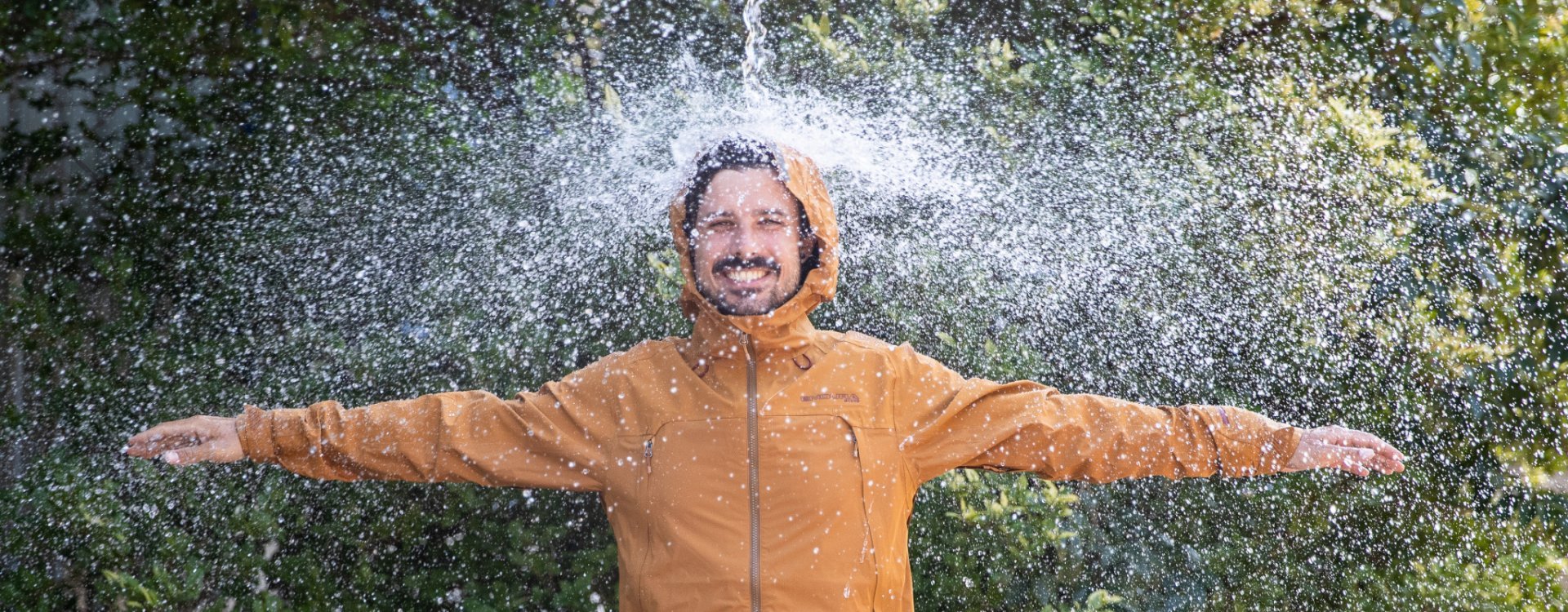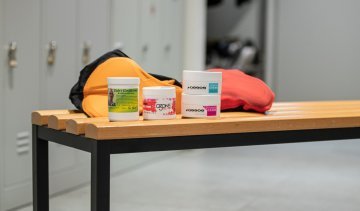
Chamois Cream for Cycling
No more sore spots after long bike rides! Chamois cream can provide relief. Here’s how to find the right one and use it well.
Filthy weather - and still out on the bike. But what do I actually have to pay attention to regarding waterproof and windproof bicycle clothing?
Tak, tak, tak! Just as you're about to hop on your bike for a spin, you hear water dripping on your helmet from above. Good thing if you've got rain wear at hand. It not only protects you from rain but also from wind and splash water. Thanks to modern materials and cuts, it still lets your sweat evaporate while maintaining your full mobility on the bike.
If you've always wanted to know how good raincoats and rain pants manage the balance between breathability and rain protection while cycling, you're in the right place. We also provide practical tips on what to look for in rain gear specifically for biking, so you have fun on your mountainbike, road bike, gravel bike, or e-bike even in nasty weather.
Even when it's not raining, wind protection on the bike shouldn't be overlooked. © bc GmbH
You may know simple rain gear like the classic, yellow "Friesennerz" coat. A rubber or PVC coating makes the material completely waterproof, keeping the rain out. However, if you wore such a jacket while biking, it would quickly become moist inside. The sweat that your body inevitably produces during activity would condense on the inside of the jacket and accumulate. Here's where the so-called breathability of modern rainwear comes into play. It doesn't let water in from the outside, but it does let sweat moisture out from the inside. The trick: Sweat leaves your body as vapor, and vapor molecules are much smaller than the water molecules of rain. The membrane in rain gear has openings, pores, that are so small that water molecules can't pass through, but vapor can. As long as the temperature and humidity around you are lower than inside the rainwear, physics makes the vapor want to "get out." Fortunately, except in high summer or the rainforest, this is usually the case.
The membranes are very thin and delicate. That's why they are bonded with base materials to form multi-layered, so-called laminates. Common are 3-, 2.5-, and 2-layer laminates. They have a robust, abrasion-resistant outer fabric made of nylon (polyamide) or polyester, beneath which lies the membrane. On the inside, they either have a firmly laminated lining fabric (3-layer), a protective coating applied (2.5-layer), or a separately inserted fabric (2-layer). 3-layer versions are more robust and durable, while 2.5-layer fabrics are often lighter, as they can do without a lining altogether. A 2-layer jacket is usually the most affordable, but also heavier and bulkier than the other two variations. Waterproof laminates are also called "hardshell". Fabrics that are only windproof and possibly water repellent are called "softshell".
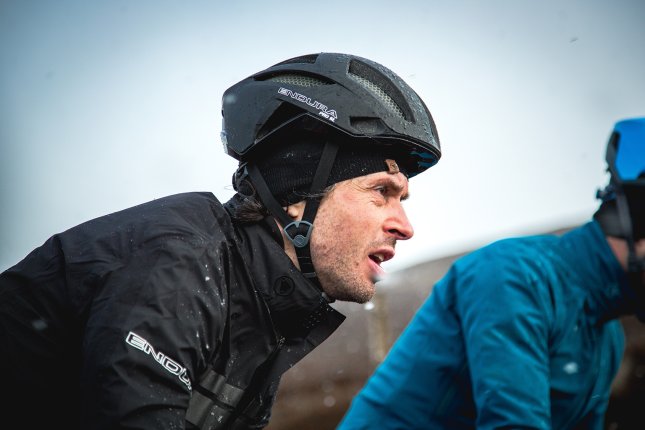
The decisive factor for the wearing comfort of a jacket under stress is the water vapour transmission. If the removal of sweat moisture does not work sufficiently, even the best moisture protection is useless.
Advertising images often symbolically demonstrate waterproofness with beading water droplets. However, this effect is not achieved by the waterproof membrane, but by a water repellent coating – called DWR (durable water repellent). It's especially important for the breathability of rainwear. Without it, the outer fabric layer would saturate with water across its surface and restrict the passage of water vapor. If that happens, for example, because the coating has worn off, it often creates the impression that the jacket is no longer waterproof – even though it's "just" accumulated condensation moisture on the inside. DWR also protects against dirt and thus premature wear of your rain gear.

Very popular among Mountain bikers, because very sensible, are overalls. Preferably with short legs in shorts style. They reliably keep the elements out, but are primarily suitable for descent-oriented cycling.
Besides its excellent protection against rain, rainwear also offers outstanding wind protection, but often a little less will do. Textiles that are completely windproof but not 100 percent waterproof offer clear advantages in terms of weight, pack size, and breathability. Reduced to the size of a tennis ball, lightweight wind vests and windbreakers fit into almost any jersey or saddle bag. This way, you remain flexible on the go and can quickly pull over protection against the wind, for example, before a descent.
High-quality wind jackets – as well as certain softshell jackets – also have a membrane installed, which is highly water repellent (but not waterproof!) and one hundred percent windproof, while also allowing maximum water vapor passage. The term "windproof" actually refers to a permeability value that doesn't let the skin feel any air movement (< 3 liters/m2/second).
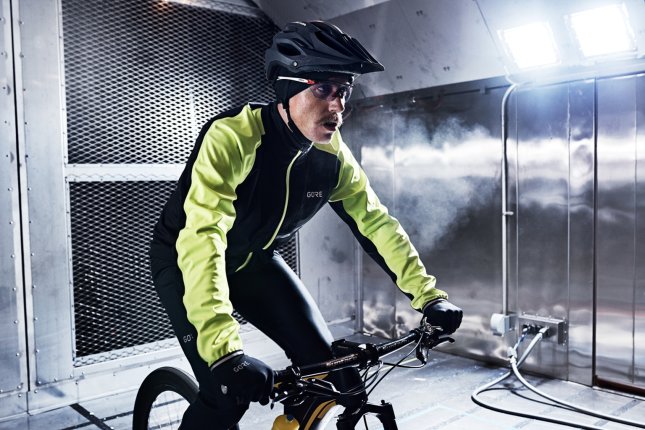
If you are "only" out in the cold and not in the rain, a windproof jacket is the better choice for you: the windproof membrane counteracts windchill, sweat moisture can escape better than with (most) waterproof jackets.
A good fit is very individual and specialized according to the area of use. Ideally, you should barely notice a rain jacket while riding. The fit in various positions that you assume on the bike is important. They differ significantly from the posture in which you stand upright in front of the mirror to see how your new hardshell fits and looks on you. The "aha" moment on the bike comes when the bent over position closes the gap at the belly, the sleeve cuffs move just right to the wrists when you reach for the handlebars, and shoulders as well as preformed sleeves come into position. Depending on the area of use - road bike, mountain bike (MTB), or touring - the fit parameters vary a bit, as, of course, the sitting position on a racer differs from that on an MTB, trekking, gravel, or city bike. Nevertheless, these four "checkpoints" are important indicators for the correct fit of a bike jacket.
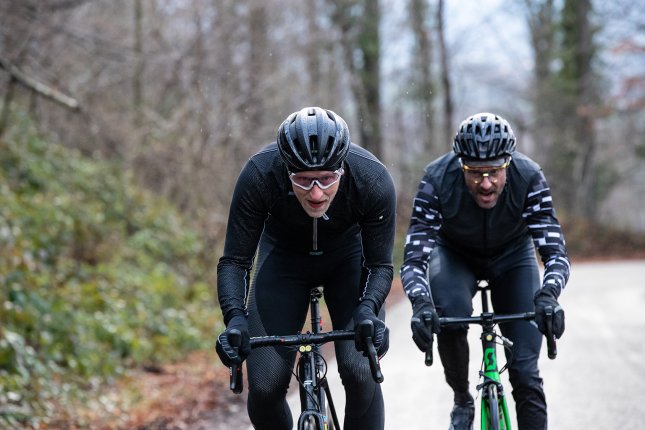
A cycling specific fit is - not only on the Road bike - of crucial importance. If the jacket seems to fit perfectly when standing upright: Watch out! Much more important is the position on the bike.
The different cycling disciplines, with their varying riding positions, pose requirements on the cut and fit of rainwear. But even beyond that, rain gear differs for MTB, road, gravel, e-bike, and everyday cycling. Of course, personal preferences are more decisive than the bike you ride. Here's a short list of points that might be important for you:
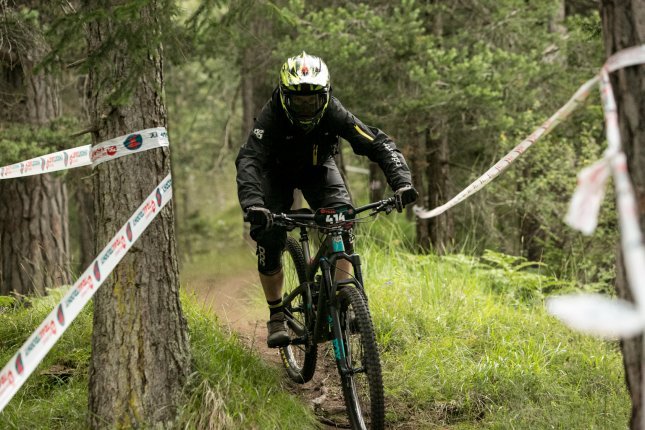
With the Dirtlej suits, waterproof full body suits, a serious problem is eliminated: There is no gap between jacket and trousers.
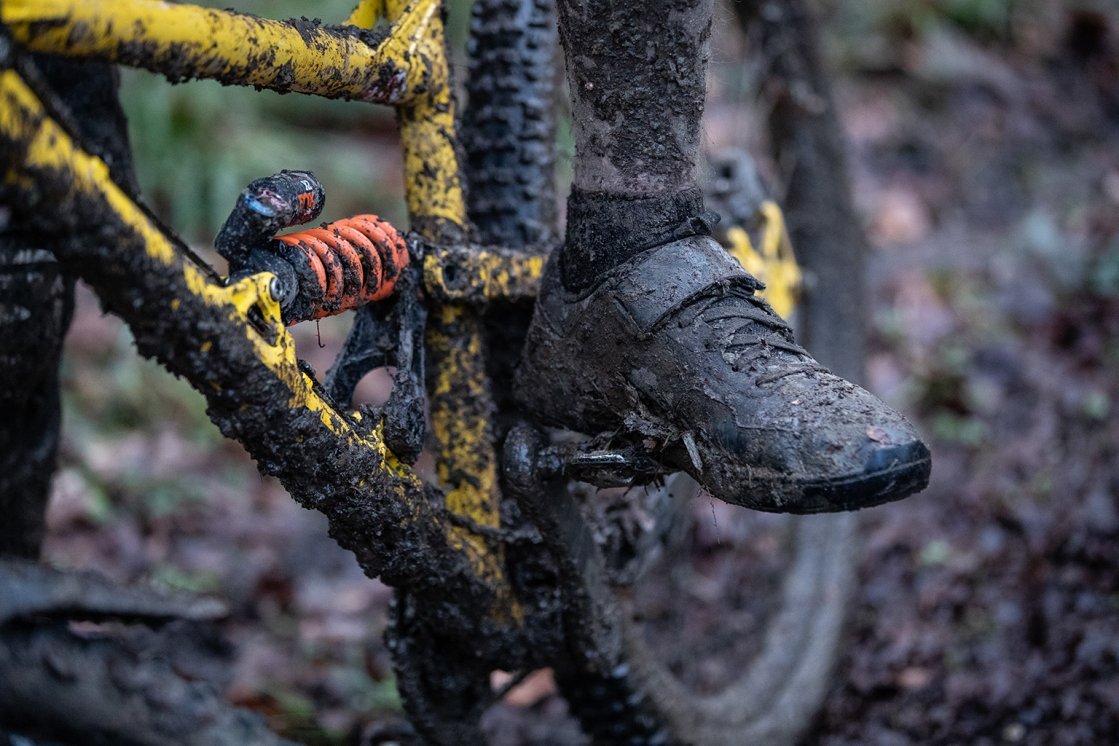
And another tip: waterproof socks. Keep your feet warm and dry. Any time of the year.
For optimal functionality of rain gear while biking, what you wear underneath is also important. It should be breathable functional clothing that doesn't hold moisture but wicks it away to the outside. A tip: Pay close attention to how you feel temperature-wise before you put on the rain gear and shortly after putting it on! Often, you can do without a layer underneath and then ride with a better body climate.
Rainwear is always the outer layer in the layering or onion principle. Here you can learn specifics about the other middle and inner layers: How to: Cycling Apparel - Hurrah for Mid-Layers and How to: Cycling Apparel - Base Layer, the Layer on the Skin.
To ensure that your rain gear lasts a long time and always functions reliably, it should be well maintained. Dirt and even sweated-out minerals can impair the function of the membrane. Therefore, you should wash it in time. If water no longer beads off the rainwear, then it's time to renew the DWR. You can do this yourself. What you should pay attention to when washing and impregnating can be read in our article: How to: Care for Your Bike Apparel - Proper Maintenance of Functional Fabrics.
